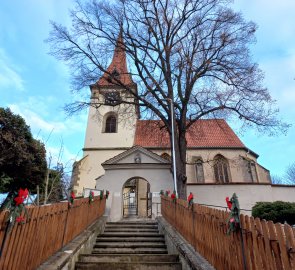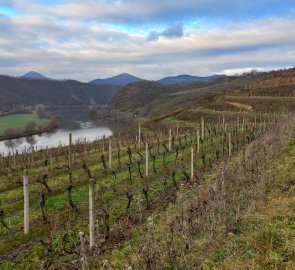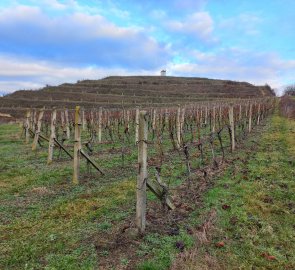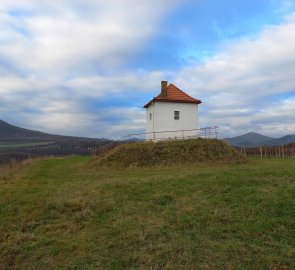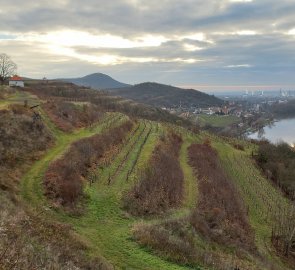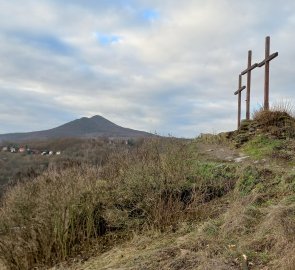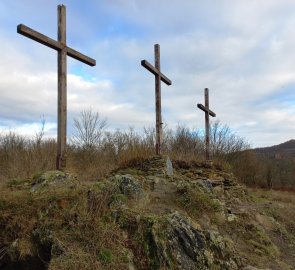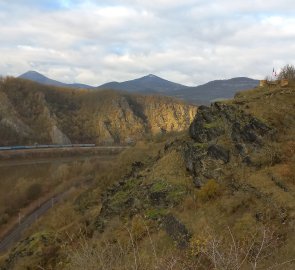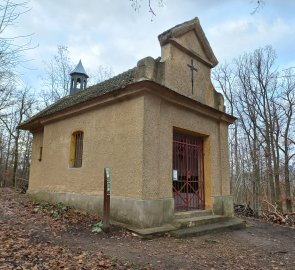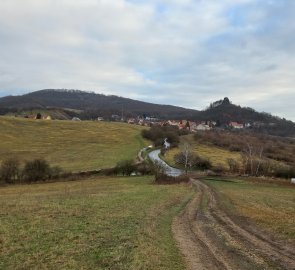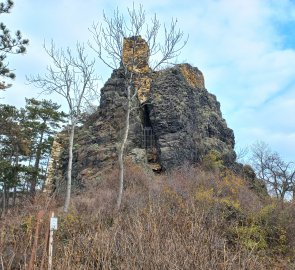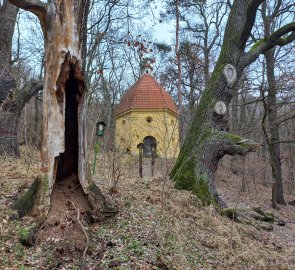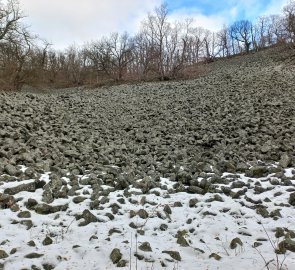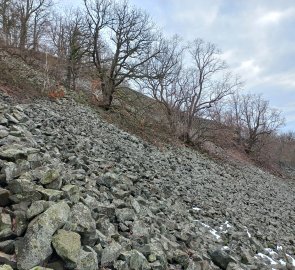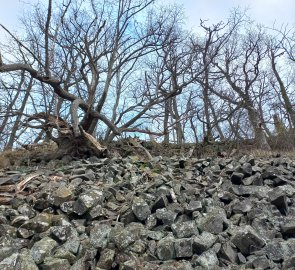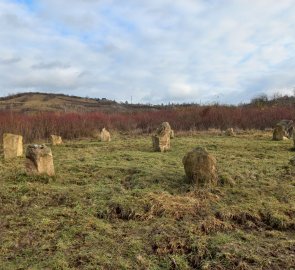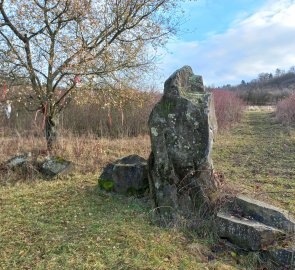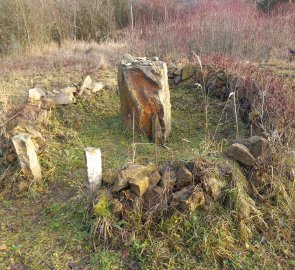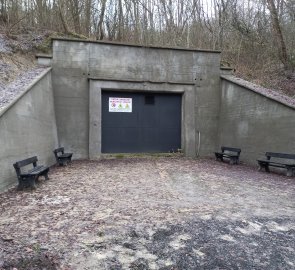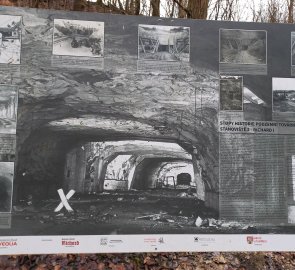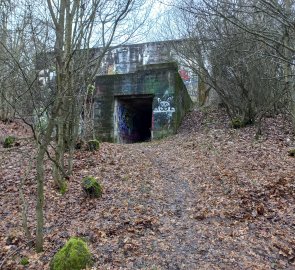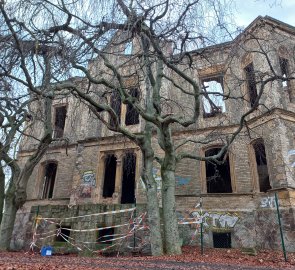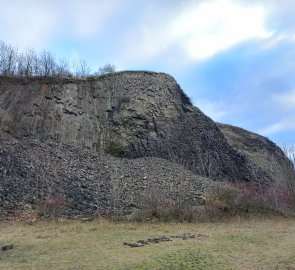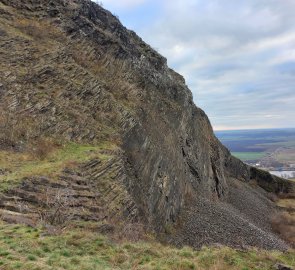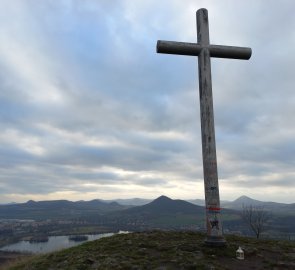A trip in the Bohemian Central Highlands for sightseeing and history
Mountain range, region / State
Bohemian Central Highlands / Czech Republic
Season
Fall
16. 12. 2023
Difficulty
1 / 5
Elevation
↑ 819 m
↓ 819 m
Length
18.3 km
5 hours
Altitude
max. 505 m n.m.
min. 150 m n.m.
Tips for hikes in the country Czech Republic

A short hike with children to the Žižkov Memorial at Trocnov

Two-day crossing of a part of the Javorníky Mountains with children

A trip to Psana Rock and the Slapy reservoir viewpoint
A trip to the Central Highlands to see Labe sights, stone circles and an underground factory
Starting point
Velké Žernoseky, a few km from Litoměřice, plenty of parking spaces, good accessibility by train/bus, ferry in summer.
Description of the hike
If you take the train or the old road to Ústí, the first hills of the Bohemian Central Highlands start to rise behind Lovosice. Terraces of vineyards rise around Velke Žernosky. Between the rows of vines stand small vineyard houses and where the river plunges into the Elbe canyon, there are three crosses on the first rock and the Czech flag flies - the Gateway to Bohemia, Porta Bohemica.
From Velke Žernosky I go past the advent decorated church of St. Nicholas straight to the vineyards. The vineyards are private property, but you can walk the paths. From the vineyard house on the Malá Vendule hill there is an unobstructed view of the surroundings - across the Elbe to the south the unmistakable Hazmburg with the silhouette of the castle, opposite Lovoš, Kletečná and the lightly snow-covered Milešovka. I walk through the vineyards to the neighbouring Velka Vendula with another small house. At the end of the vineyard I slide into a ravine where I come across a green sign. I follow the marked path up the hill to Calvary, or Tříkřížový vrch. The Calvary is a cliff right above the Elbe, from where the view is almost kitsch-like - the Žernosec vineyards, the round Radobýl hill above, the Elbe valley, the smoking industrial city of Lovosice, the Elm in the distance in the haze, and the rocky Elbe canyon opening up behind me. The Elbe viewpoints never get tired, if only because from them you can look down on the main line to Ústí and Děčín. Fast trains and freight trains run here every 5 minutes, it's like a model railway.
I follow the green sign and from Kalvária I continue along the forest path to the village of Kamýk. There are two nicely renovated chapels by the road - a small hunting chapel and a larger one of the Visitation of the Virgin Mary. Beyond the forest I climb to the village, above which the ruins of a castle stick out like a broken tooth. I change the sign to blue and continue to the Plešivec hill. Already from afar I can see the stone fields below its peak. Educational boards inform that there are ice pits below Plešivec, where ice remained for a long time after winter. I turn off at the Chapel of the Nativity of St. John the Baptist and indeed there are still remnants of snow under the stone fields, which have long since melted elsewhere in the area. The stone field is breathtaking, a mass of boulders and among them twisted oaks, some alive, others only dry torsos. Plešivec offers a partial view back to the Elbe valley and on the opposite side to Litoměřice.
After a rest I return to Kamýk by the same route and take the blue trail to the village of Malíč. According to the map, there should be stone circles here and indeed, I find them just off the road in a stand of thorns and tall grass. There are three of them and the locals apparently believe in their power, in the hollows of the stones there are small coins, painted stones, hearts, little angels. There is even an animal skull hanging from the tree near the two-metre menhir circle and the tree is decorated with ribbons. I climb up another hill to the village of Knobloška and the plain of Bídnice. If the western side of the hill gravitated towards pagan rituals, the eastern part has an even darker history. There used to be a limestone mine on the hillside near Litoměřice. At the end of the war, when German industry was the target of Allied attacks and bombing, it was decided to seize the mine and build a secret underground factory called B5 - Richard (more in Interesting Facts).
You can still find a lot of half-decayed buildings in the hill - a concrete building of a filtration station, round outlets of boreholes, collapsed columns. The atmosphere of a horror movie is illustrated by the half-collapsed Pfaffenhof Villa, which was the headquarters of the SS Führungstab Kommando B5, the leadership of the labour camp. I follow the road to the last hill on the road, Radobýl Hill. Radobýl is, in a word, a blast. Its western side is exposed, the basalt blocks are stacked here in huge waves and stone suns. The weathered boulders end in a stone field. The plateau below the peak offers a beautiful view - of the Žalhostice vineyards, the Žernosecká Lake, the snow-capped Ore Mountains in the distance. A massive concrete cross has been erected on the summit. From Radobýl I return to Žernosky by road and between the vineyards.
Difficulty
Easy trail in the Bohemian Central Highlands, mostly on marked trails.
Water availability
In Žernoseky there is a shop, restaurant, wine cellars. There is no possibility of refreshment on the way.
Mountain peaks
The route leads over the hills of Kalvárie, Plešivec and Radobýl. The views include Hazmburg Castle, the mountains Říp and Milešovka and the Krušné hory.
Danger
The route is not dangerous, it is possible to go with older children.
Food
I had food with me, refreshments only available in Žernosky.
Attractions
A brief history of the secret underground factory Richard
There used to be a limestone mine in a hillside near Litoměřice. At the end of the war, when German industry was the target of Allied attacks and bombing, it was decided to seize the mine and build an underground factory called B5 - Richard. In record time, a secret factory for machine parts was built inside the hill. The megalomaniacal project, approved by Hitler himself, included the construction of an inlet to draw water from the Elbe River two kilometres away, giant reservoirs and later the Arbeitslager Leitmeritz labour concentration camp. In less than a year before the end of the war, more than a thousand people worked here around the clock, and around 19,000 prisoners passed through the camp, one in four of whom died. The former brickyard, converted into a crematorium, could not cope and the dead had to be placed in mass graves. Black and white plaques, some of them sadly damaged, provide information about the history. You can read more on the Internet, for example at www.tovarnarichard.cz , or www.richard-1.com.
